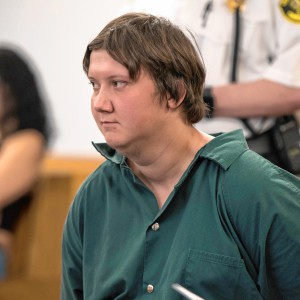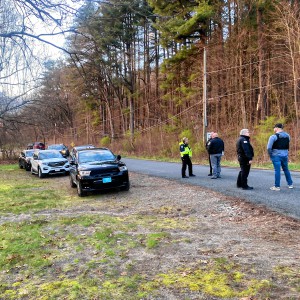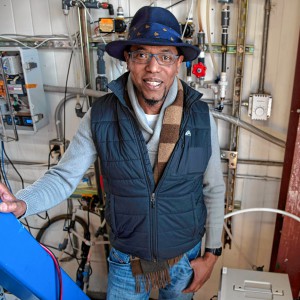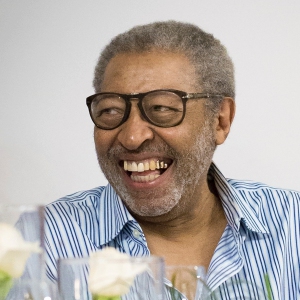Former ‘drug czar’: strength of community will prevail in fight against opioid crisis
| Published: 06-19-2017 12:35 PM |
NORTHAMPTON — An event coordinated by Hampshire HOPE and the Northwestern district attorney’s office aimed to offer just that: hope in the fight against the opioid crisis.
And that’s exactly what it did for Deb McNeice, who said she was devastated when she lost her son last year to the opioid epidemic. She came to the Thursday event in the Union Station ballroom to memorialize Patrick Brown, who died at 28, and to listen to the evening’s speakers.
She said he’d been recently released from treatment when he died.
“There was that gap after treatment,” she said. “That’s a spot that there has to be a continuation of care. We were just blindsided.”
Even though it’s only been a year since his death, she said she’s already seen significant improvement in the community when it comes to services and care, which she said is heartening.
“It’s helping,” she said. “There’s more awareness.”
The notion of coming together as a whole community to combat the crisis was an overarching theme at the event, which drew a crowd of more than 100 public health experts, law enforcement officials, treatment professionals and those in recovery. The event featured keynote speaker Michael Botticelli, the former director of the White House Office of National Drug Control Policy under the Obama administration.
“This is an issue unlike any other that I’ve encountered,” Mayor David Narkewicz said to open the event. “Itattacks all sectors of our community.”
Article continues after...
Yesterday's Most Read Articles
 Locking up carbon for good: Easthampton inventor’s CO2 removal system turns biomass into biochar
Locking up carbon for good: Easthampton inventor’s CO2 removal system turns biomass into biochar
 Northampton man will go to trial on first-degree murder charge after plea agreement talks break down
Northampton man will go to trial on first-degree murder charge after plea agreement talks break down
 Police report details grisly crime scene in Greenfield
Police report details grisly crime scene in Greenfield
 Area property deed transfers, April 25
Area property deed transfers, April 25
 Advancing water treatment: UMass startup Elateq Inc. wins state grant to deploy new technology
Advancing water treatment: UMass startup Elateq Inc. wins state grant to deploy new technology
 Super defers Amherst middle school principal pick to successor; one finalist says decision is retaliation for lawsuit
Super defers Amherst middle school principal pick to successor; one finalist says decision is retaliation for lawsuit
Speakers at the event emphasized the need to fight the epidemic as a united front. Hampshire HOPE, they said, ensures that happens. The coalition, overseen by the Northampton Department of Public Health, unites recovery professionals to better align services in the fight against opioid crisis.
“It is the web that is bringing us all together,” said Cherry Sullivan, program coordinator for Hampshire HOPE. “County lines are arbitrary when it comes to addiction.”
Sullivan said in the coming year the agency will work on identifying and bridging gaps in service, training more medical professionals to handle the addiction treatment medication called buprenorphine and doing whatever else is necessary to reduce harm.
“Lives are at stake,” she said. “The reality is people are still suffering and people are still dying.”
Sullivan and others railed against the stigma that pervades their work.
“Harm reduction is the radical notion that drug users are people,” Sullivan said, adding they’re “deserving of love even when it feels really hard. We have a sacred responsibility to care for one another.”
Because the epidemic affects all segments of the community, speakers highlighted the need for each to participate in the path forward. To illustrate that effort, Florence Bank President and Chief Executive Officer John Heaps said a few words about his company’s recent donation of $50,000 to Cooley Dickinson Hospital for the purposes of fighting the crisis.
“This was a no-brainer for the bank,” he said. “This is a community issue, and it’s something we have to deal with.”
Joanne Marqusee, president and CEO of Cooley Dickinson Health Care, said the Cooley Dickinson Opioid Task Force is using the funds to train more physicians to prescribe buprenorphine, screening and prevention work.
Dr. Peter Halperin, medical director of integrated behavioral health at the hospital, said people are receiving fentanyl by mail, underscoring a stark difference between society’s reaction to that fact and the anthrax scare.
“These drugs are the leading killer of human beings in the United States under 50,” he said. “It takes more than what we’re doing.”
Ed Schreiber, director of outpatient substance use at ServiceNet, talked about the paradigm shift happening in the field.
“Addiction is part of the human experience and we’re all on the spectrum in some form,” he said. “People are using substances to reduce the pain. So why the pain?”
He said the source of addiction is rooted in our culture — “the culture of hopelessness.”
The upside, he said, is that the brain is a living organism that can be rewired to fight the addiction.
Botticelli, Obama’s former “drug czar,” said he worked to shift more public funds to prevention, treatment and education.
He said that when he left his position, the federal government spent funds equally between those areas and law enforcement for the first time in history.
On the local level, Police Chief Jody Kasper agreed that simply locking up people with substance use issues doesn’t do much good.
“We’ve got 20-30 years of history saying that doesn’t work,” she said earlier in the evening.
Botticelli worked for the Massachusetts Department of Public Health for 18 years before his ascent to the Obama administration, and now works as the executive director of the new Grayken Center for Addiction Medicine at Boston Medical Center.
When it comes to treatments like buprenorphine, he said the evidence shows overwhelmingly that people who take the medication as part of their treatment do better.
“It’s time to end the divisiveness,” he said. “The evidence is really clear.”
He emphasized the need for mindful language in the battle against stigma. He said agencies around the country are changing their language from “substance abuse,” which is more punitive, to “substance use,” which is more neutral.
“Don’t use your 12-step language in a public setting,” he said. “Because it influences the way people think about us.”
Because community is the epidemic’s antidote, Botticelli said western Massachusetts is in a strong position to address the problem.
“Everybody knows people here,” he said. “That’s your strength.”
He said Massachusetts has long been at the forefront of handling matters of addiction, like with the use of naloxone to treat overdose, a health trend that began with first responders in Quincy.
“If we can’t get it right in Massachusetts, nobody’s going to get it right,” he said. “There’s no better place and there’s no better people doing this work than the people in this room.”
One area Massachusetts needs to work on, some said, is bringing in more treatment centers. Dennis Gonzalez, a recovery coach for Hope for Holyoke, said he works with people for months trying to get them into a program only for them to get turned away by booked-up centers.
“It’s frustrating because I can’t get them into a bed,” he said, adding he himself is in recovery. “When I needed help, I needed it then.”
No one in the room denied there’s more work to be done, but the feeling of the night was one of optimism.
Sheri Borsotti, who has been in recovery for 18 months, said Hope for Holyoke has “given me purpose, given me a new life and a new family.” She said her experience at the center has inspired her to get into the recovery field, to help bridge the growing recovery network in the Valley.
“When we collaborate and get together,” she said, “there’s really no telling what we’re capable of.”
District Attorney David Sullivan closed the ceremony: “The more that we connect with each other, the better we’re going to be.”
We updated this story to clarify that fentanyl sent by mail is not a hypothetical reality but an actuality, the New York Times reports.
Amanda Drane can be contacted at adrane@gazettenet.com.

 Federal probe targets UMass response to anti-Arab incidents
Federal probe targets UMass response to anti-Arab incidents William Strickland, a longtime civil rights activist, scholar and friend of Malcolm X, has died
William Strickland, a longtime civil rights activist, scholar and friend of Malcolm X, has died
